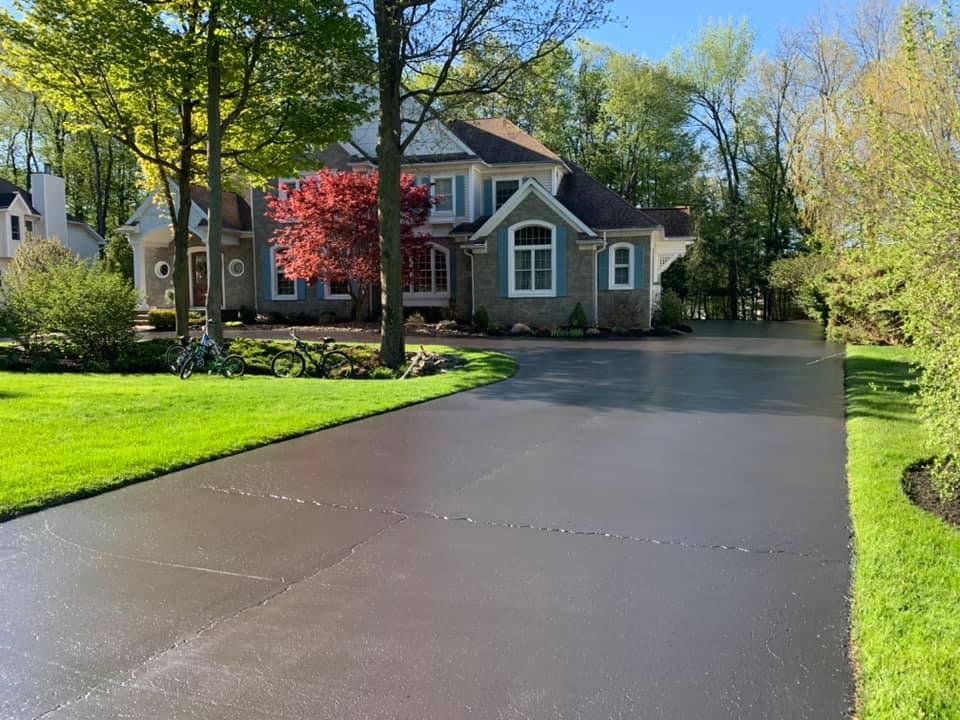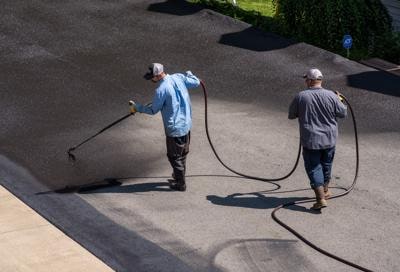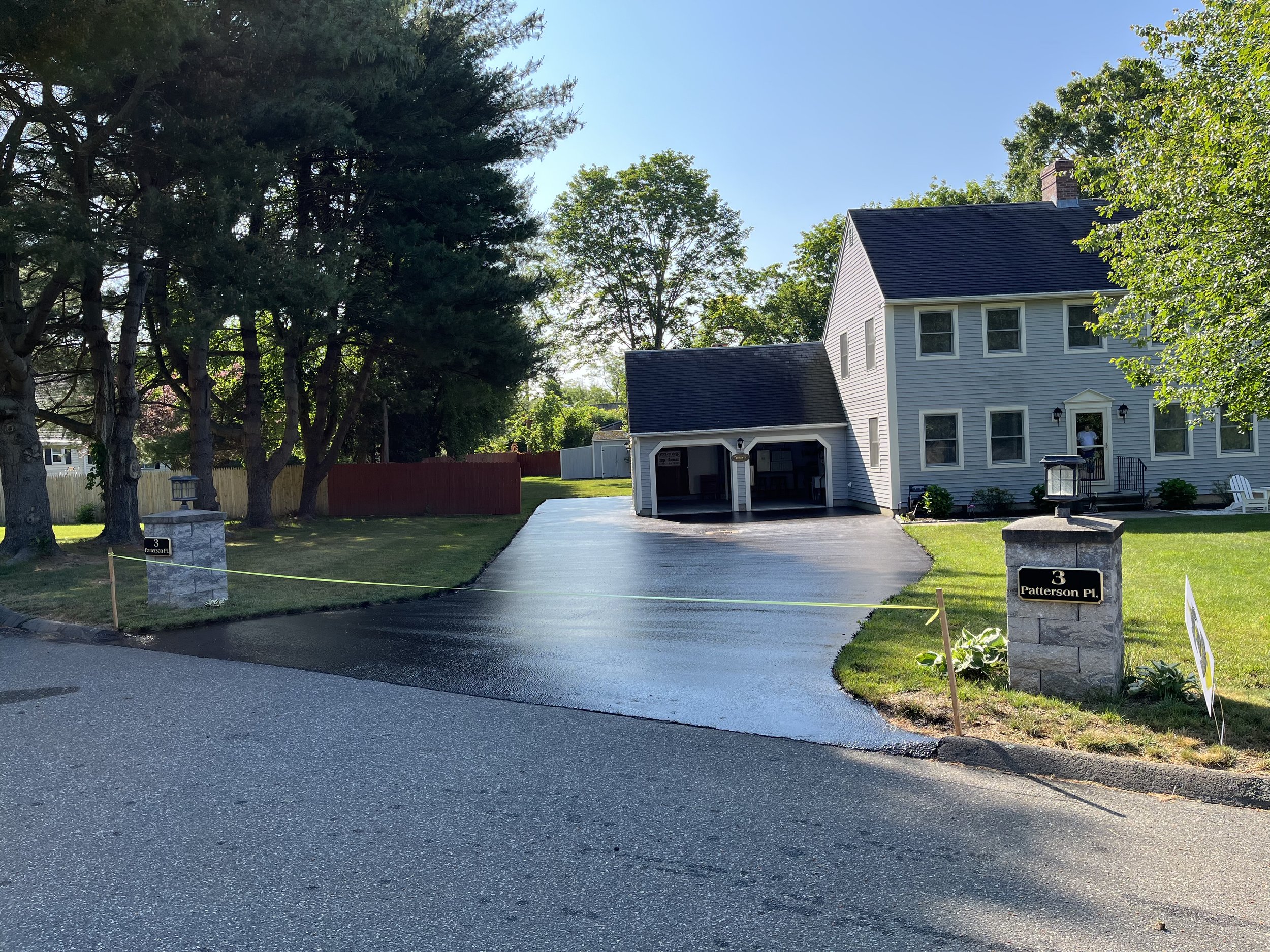Warm Mix Asphalt: A Sustainable Remedy for Pavement
Warm Mix Asphalt (HMA) has become a leading sustainable selection for pavement options, supplying a myriad of innovative innovations and ecological advantages. Its ability to recycle materials and reduce energy intake provides a compelling instance for its adoption in road building and construction tasks. The long-lasting performance and durability of HMA make it a preferred alternative for facilities development. As the demand for environment-friendly building and construction techniques grows, exploring the subtleties of HMA's sustainability can offer valuable understandings into the future of sidewalk services.
Environmental Benefits of Warm Mix Asphalt

Moreover, Hot Mix Asphalt assists to minimize city warm island impacts. Its dark color soaks up sunlight, lowering the amount of warmth reflected back right into the atmosphere compared to lighter-colored sidewalks. This can reduce ambient temperature levels in urban locations, decreasing the demand for cooling and eventually decreasing power consumption.
Additionally, Warm Mix Asphalt adds to boosted stormwater administration. Its porous nature enables water to penetrate the sidewalk and recharge groundwater materials, lowering drainage and the threat of flooding. These environmental benefits make Hot Mix Asphalt a sustainable choice for paving highways and roads.
Energy Efficiency in HMA Production
Is energy performance a vital factor in the manufacturing of Warm Mix Asphalt (HMA)? Power plays a significant role in the production of HMA, impacting both cost and environmental sustainability. One essential facet of energy performance in HMA manufacturing is the usage of cozy mix asphalt (WMA) technologies.
Additionally, innovations in plant technologies have actually led to more energy-efficient HMA production procedures. By maximizing power usage in HMA manufacturing, the market can lower its carbon impact while maintaining top notch pavement materials.
Recyclability of Hot Mix Asphalt
The recyclability of Hot Mix Asphalt (HMA) is a crucial facet of its sustainability and long-lasting ecological effect. HMA is among the most recycled products in the United States, with over 100 million lots of reclaimed asphalt pavement (RAP) being reused each year in brand-new pavement building and construction. Reusing HMA offers a number of environmental advantages, such as minimizing the need for virgin products, lowering power intake during manufacturing, and lowering the amount of waste sent to garbage dumps.
The process of recycling HMA involves grating the existing sidewalk, squashing it into smaller sized pieces, and blending it with brand-new aggregate and asphalt binder to create a recycled mix. On the whole, the recyclability of HMA plays a considerable duty in advertising sustainable techniques within the sidewalk industry.

Long-Term Performance of HMA
Asphalt sidewalks show durability and click for more resilience over a prolonged period, mirroring the lasting efficiency of Hot Mix Asphalt (HMA) The longevity of HMA can be credited to its capacity to endure rush hour lots, rough climate condition, and the impacts of aging. Studies have shown that well-designed and properly constructed HMA pavements can last for twenty years or even more with regular maintenance. The trick to optimizing the long-term efficiency of HMA hinges on utilizing premium materials, adhering to best techniques in construction, and executing reliable upkeep techniques. Appropriate water drainage, regular inspections, and prompt repairs are crucial for maintaining the architectural honesty of HMA pavements in time. In addition, innovations in HMA modern technology, such as making use of polymer-modified binders and cozy mix asphalt, have better improved the durability and long life of HMA sidewalks. By prioritizing top quality building and construction and upkeep practices, HMA remains to prove itself as a sustainable and economical solution for durable pavement framework.

HMA: Sturdiness and Sustainability
Demonstrating both longevity and sustainability, Warm Mix Asphalt (HMA) has actually ended up being a cornerstone in the building and construction of resilient pavement facilities - angled parking. HMA's longevity comes from its ability to stand up to heavy tons, severe weather, and high website traffic volumes, making it a trusted selection for roadways, freeways, and airport terminal runways. The composition of HMA, which typically consists of aggregates, binder, and filler, plays an essential function in boosting its longevity and resistance to tear and use
Furthermore, HMA's sustainability exists in its recyclability and energy-efficient production process. The ability to reuse recovered asphalt sidewalk (RAP) in brand-new HMA combinations reduces the need for virgin materials and lessens the ecological influence of pavement building and upkeep. Additionally, the energy effectiveness of generating HMA depends on its lower mixing temperatures contrasted to various other sidewalk products, leading to decreased power intake and greenhouse gas exhausts.
Conclusion
Finally, warm mix asphalt (HMA) offers a sustainable service for pavement with its ecologically friendly attributes. HMA's recyclability, energy performance in production, and long-term sturdiness make it a green selection for roadway construction. By preserving natural deposits, decreasing waste, and lowering greenhouse gas emissions, HMA plays a critical role in advertising sustainability in framework development. Its ability to mitigate metropolitan heat island impacts better highlights its relevance in producing environmentally mindful and durable pavement systems.
HMA is his comment is here one of the most recycled materials in the United States, with over 100 million lots of recovered asphalt sidewalk (RAP) being reused each year in new sidewalk building.The process of reusing HMA involves grating the existing sidewalk, squashing it into smaller pieces, and blending it with new accumulation and asphalt binder to create a recycled mix.Asphalt pavements show sturdiness and resilience over an extensive period, mirroring the long-lasting efficiency of Hot Mix Asphalt (HMA) Additionally, innovations in HMA innovation, such as the usage of polymer-modified binders and warm mix asphalt, have actually better improved the durability and durability of HMA sidewalks. The ability to reuse reclaimed asphalt pavement (RAP) in blog brand-new HMA mixtures minimizes the need for virgin products and decreases the ecological impact of sidewalk construction and maintenance.